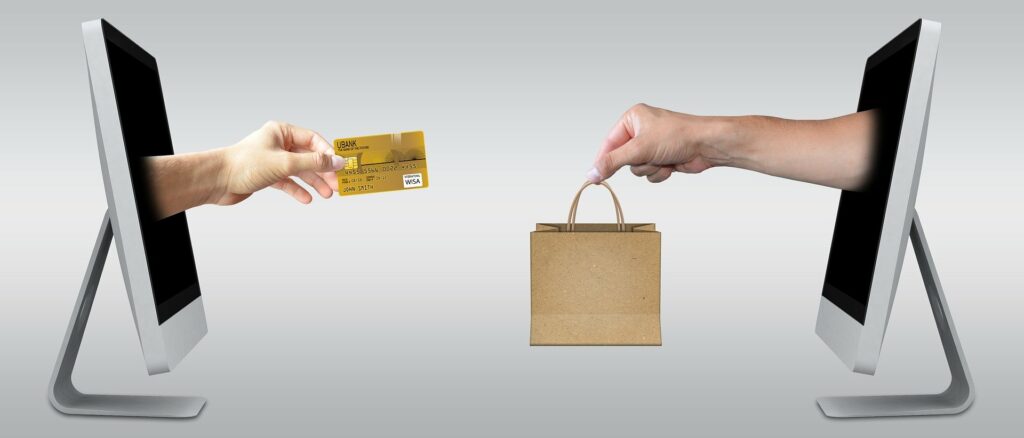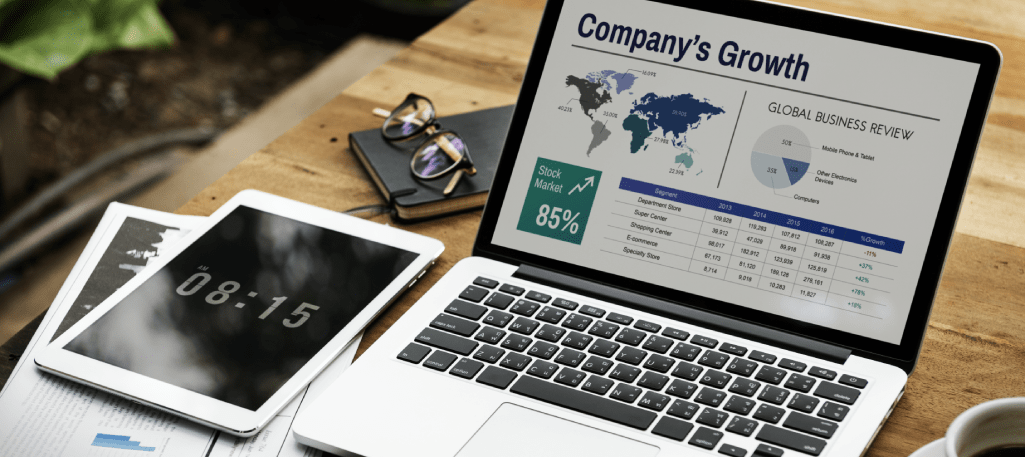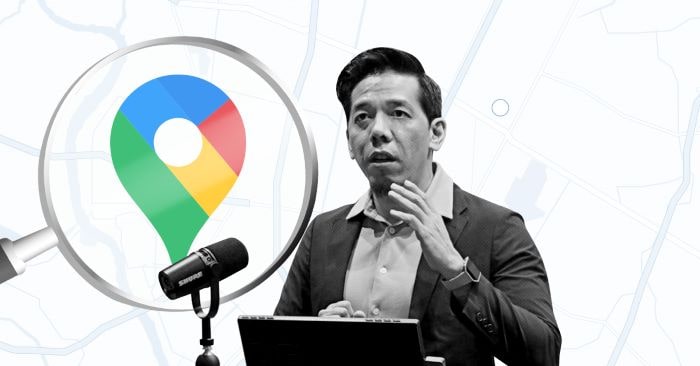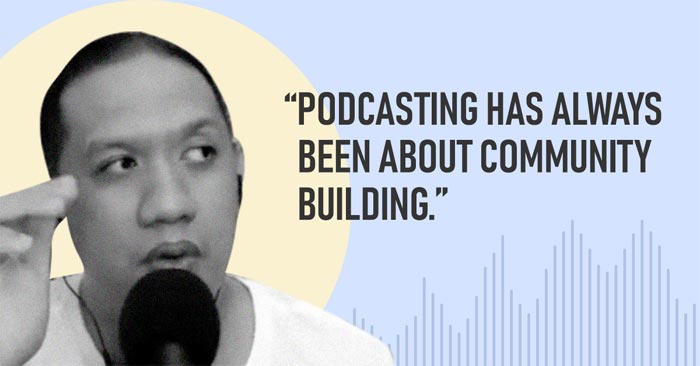Truelogic Episode 87 Recap: The 2023 Philippine Digital e-Conomy

Podcast Transcription
Berns San Juan: Let’s talk about the Philippine digital economy again. Hi guys, and welcome to another episode of the Truelogic DX podcast. It’s that time of the year again when we close out one year to get to the next. As always, my favorite part of this is when the World Bank reports, when the Kantar reports, when the Bain reports, when the Thomas Cook reports when the Google reports, and the Facebook report all come out. And it allows us to take a unified look at how the Philippine digital economy has progressed over the years. So it’s a lot of content and it’s a lot of reports and it can be a little hard to digest.
So I’m going to be mama bird on this episode and I’m going to preach to you and regurgitate how we understood that information to you guys. So this will be a couple of summaries. I’ll try to go through it in, I would say, six major points. So let’s get started.
The Philippine Digital e-Conomy
1. The Philippine digital economy, it’s expected to hit 24 billion dollars in gross merchandise value this year and it’s expected to hit about 35 billion dollars.
There’s an additional 11 billion dollars over the next two years. That makes it one of Southeast Asia’s fastest-growing digital economies and it’s expected to grow by double-digit rates over the next two years towards 35 billion by 2025. At 35 billion, that will just put it slightly below 10 percent of the overall Philippine economy.
So the different reports said that electronic commerce continues to drive the country’s digital economy. So, for example, in an interview with the head of data insights at Google, they said that the Philippines has been continuing a double-digit climb towards 35 billion and has exhibited an incredible amount of resilience. And it generates a lot of opportunities for you and me and other Filipinos despite macroeconomic headwinds.
I would also argue the Philippines is usually pretty resilient against macroeconomic headwinds. So we’re in a pretty good position plus terms of digital adoption, Filipinos are very game. This momentum is probably expected to continue and it’s fueled by a lot of the potential offered by AI and the digital participation of a lot of internet users in the country, especially those that are outside of Metro Manila. There’s a lot of digital adoption in Metro Manila, but you know, Metro Manila is not the Philippines, which means a lot of the medium to long-term growth in digital will come from non-NCR adoption.
As expected, online travel posted an 88% growth, the highest growth rate in the local economy. You know who you are, Revenge Traveler. So Southeast Asian digital economy revenue is also set to surpass $100 billion this year with a growth rate that’s about 1.7 times faster than the region’s actual gross merchandise value growth. So what that means is a lot of the commerce that people used to do traditionally is moving online. So yes, overall consumption and overall purchases of merchandise are increasing. But the rate at which that increases on digital platforms and the rate that increases in traditional retail are growing at different rates with online being the faster source of growth.
Philippine Economy over the years
So let’s give you a quick snapshot of how the Philippine economy has been growing over the years. In 2021, the estimated GMV, and these figures are in billion dollars because I think in dollars. But in 2021, the gross merchandise value of the digital economy was about 17 billion in the Philippines. In 2022, that rose by 5 billion, so we became 22 billion. In 2023, it decreased a bit as we got out of the pandemic. It rose by 2 billion, so about 12-ish, a 13% increase against 2022. It rose by 20% in 2023, or it’s expected to grow by 20% more from 2023 to 2025 if we hit the $35 billion mark. And then, of course, from 2030 to 2050 onwards is expected to land somewhere between the $80 billion figure. But take that as an example, 31% from 2021 to 2022, 13% from 2023 to 2022, and an estimated double digits for 2024 and 2025 moving forward
E-commerce

In terms of e-commerce, accounting for 70% of all online activities remains the primary driver of the Philippine digital economy. The e-commerce was about 12 of 17 billion in 2021. So clearly the largest share. In 2022, if all GMV was 22 billion, sorry, 15 billion of that was e-commerce. And so that’s almost a 30% increase coming from the previous year. In 2023, we’re going to be positioned at 16 billion. So don’t take my word for it yet because 2023 ain’t over and we all know the holiday season drastically increases the demand in the market. Apparel grows by over 100%, food grows by about 80%, and so on. And then, of course, the estimate is that it will be 24 billion by the close of 2025. So stay tuned to the podcast because I’ll revisit this at the close of 2025.
Online Travel
Let’s go back to online travel, one of the most remarkable movers this year. It’s not done, but it is on track to hit $3 billion this year. And it seemed to grow at an 18% cumulative annual growth rate by 2025. And that’s when the sector is expected to reach about $4 billion in GMV. Clearly, in 2021, we were all boxed in, right? So it was a paltry half a billion dollars. In 2022, it went back to about a billion dollars as some lockdowns eased. You’re looking at, I would say, a doubling, so about a 207% increase from 2021. 2023 saw that grow to about three billion dollars, and that’s an immense increase coming from 2023. It’s estimated that it will add another billion to its value by 2025.
Transport and Food
Transportation performed well, growing from 2 billion in 2021 and then 2.6 billion, right, like a 37% increase in 2022, and a 16% increase in 2023. But as we were no longer locked down in our houses, I would say it’s still remarkable that online commerce for food has not dipped. Means sure you see people in restaurants, but it hasn’t decreased our online consumption. It’s slowed down the growth somewhat, but it has not killed our appetite to order online. It seems like that’s just a habit that we’ve never let go of in spite, of being post-COVID and you know, Filipinos, surprise, surprise.
Online media
Of course, the largest contributor to the growth was the lockdown where for the first time people spent $3 billion on various streaming services, on various subscriptions, so you’re talking like Netflix and things that you pay for to watch your entertainment, HBO Go, and so on. But the growth in online media has been, I would say, a bit more conservative, right? Since the big spike from 2020 to 2021, it’s only grown by a modest 8% and 13% in 2021 to 2022. That’s one major point.
2. Funding dropped substantially from pandemic highs, including previous heavyweight digital financial services.
Funding, like the online startup community, investments in startups, and investments in technology in the Philippines, where in the first half of last year, we saw $800 million come into the country to invest in various startups, and various technology companies.
However, this year, in the first half of 2023, we only got a fourth of that, which sort of makes sense, right? Most of these are foreign investments. And with G7 countries, I would say except for the US, with G7 countries seeing large uncertainty when it comes to the inflation rates in their economies and whatnot, it’s sort of expected.
To that end, I would say that the investment environment in the country, in the Philippines, is very conservative. We’re not very hawkish. We’re not the types that do, okay, let’s deploy 25 startups and hope one of them pays back. That’s not the culture in the country. We do tend to be very conservative when it comes to investment. So I wouldn’t say this isn’t necessarily a bad deal. However, there is cause to improve this confidence sentiment in the country.
In an interview with Bain and Company, I’ll quote, “Part of the reason why private funding has slowed down is in reality, because of the macroeconomic environment globally, there’s a little bit of a mismatch on what private companies and investors see as valuation,” which is true. You’re not going to see a company here where its valuation is 80x its revenue, 100x its revenue. That just doesn’t happen in the Philippines, right? Like if Ayala land is valued at a certain amount, it’s valued that way in the market. A, because of its potential growth, but B, that’s really because, of the value of the brand, how much they build, how much their assets are.
So in short, the valuation in the country evaluates the real value, not the imagined value. And to a degree, that’s a blessing because that means people are not gambling with our stock market. So companies and shareholders, they’re stuck on the realities of 18 months ago where they said, okay, my company was earning a valuation of this much, hence I ought to be able to get this much return on valuation. And investors didn’t see that. I would say there were very few investors that got to see that at that time.
So again, on this section, and I’m not going to dwell on it too long, yes, investor confidence in the technology industry in the country could be better, however, I’m not sure we’re ready to see stocks outperforming our usual blue chips like San Miguel, Ayala Land and whatnot. That’s just not the investment climate in the country. We don’t encourage gambling on our stock exchange.
3. Healthy expansion set to continue

Are expansions set to continue? Yes. Like in a nutshell, yes. In addition to the rising domestic demand in the country, there’s been a good recovery in the services sector that will drive growth over the medium to the long term. Meanwhile, private consumption will see an uptick driven by lower unemployment rates because the country I think is experiencing four-ish unemployment rates. And of course, renewed increased remittances coming from overseas. And a recovery in tourism. Our tourism did pretty well. Could do better, but it did pretty well.
And maybe this is an episode on its own where maybe I’ll talk about tourism and how digital can impact it. But whenever I travel locally, I’m always breathtaking by what I see in the Philippines. And I always wonder, like, how could people not want to see this? I always wonder that because I’ve been to a bunch of countries, they ain’t got nothing on us.
So moving on. Between January of this year to the close of September, so just right before October, we saw a total of four million inbound visitors. And inbound visitors are a combination of foreign nationals and balikbayans and OFWs coming home and whatnot. But essentially, we got about four million visitors. The Department of Tourism’s goal this year was pretty ambitious. They targeted 4.8 million visitors to the country.
That’s pretty ambitious considering how many visitors Tokyo gets, right? Like Japan gets, and again, you know, no offense to them, I love that country, but they don’t get a Boracay, they don’t get a Bohol, they don’t have a Siargao, their beaches aren’t cold. So, I don’t know, you tell me. But you know, kudos to the guys at the Department of Tourism for giving themselves a very high bar to cross because it was 2.6-ish last year.
So they gave themselves a goal that was almost double what was achieved in 2022. Tourism Secretary Christina Frasco said that tourism arrivals recorded within the first nine months of the country have brought about 316 billion to the economy. If I’m not mistaken, this is about 2% of the total economy of the country. And so this is one of those industries that is still barely scratching the surface of their full potential, like local tourism.
The employment rate in the country, I talked about this earlier, was at about, almost 96%, right? So 95.8, I think, to be precise. So that puts it at about 4.2 unemployment. We’re citing that number from what was reported in October 2023. This, by the way, is the highest employment rate in the country since 2005. So again, to all Pinoy’s and us all getting out of COVID together, kudos to everybody for participating. The country’s unemployment rate is only at about, if my math is correct, it’s like 4.2%, which is lower compared to the 4.5% unemployment rate in October last year, right? So we’re still doing better.
4. Foreseeable high growth given emerging digital participation
There are still a lot of growth opportunities when it comes to potential growth in the digital economy because Internet users are some of the most engaged users in the world. However, digital participation in a lot of sectors is still low. Right? Like, so I’ll give you guys a couple of examples. If you get your tint done, if you need car parts, and so on, where do you go? You go to Banaue. If you’re in the NCR, I mean, you go to Banaue, right? You go to Banaue, how many of those guys are online? Nada, nada, right? Like nada, nada, Google My Business profile. Maybe a Facebook page if you’re lucky, but a lot of these guys are not online. You can’t buy your car parts online. You can’t get your car tinted by ordering it online.
And so these are some examples of places that have not participated online yet. The most digital participation they do is they accept GCash, right? Like, which is not a lot of participation. So if we can convert these guys, if we can evangelize these guys to participate in e-commerce, we will probably zoom past the e-commerce and the GMV growth of the Philippine digital economy that we expect. According to research by Newzoo, it said that the Philippines has almost 70 million smartphone users. That’s probably fairly accurate, right? Like if I combine the World Bank data with the Facebook data, with the Temasek report, and with the Kantar report, they all sit around 71 million, give or take 2-3 million, right? Their data shows that Filipinos spend nearly a third of their day on their devices.
Again, agreed, right? The average Filipino online engagement time is 10.25 hours. That’s insane. So with the Philippines being highly engaged online, there’s a lot of opportunity to get the more traditional behaviors to become online. GoDigital Filipinas’ Executive Director and Private Sector Advisory Council member Mishy Co said that low levels of digital participation indicate a reluctance to use digital tools, which I also agree with.
Although there are some situations where I think it’s hopeless like my mom is 78. I give her a flip phone because she will not use a touch phone, right? Like just in case she wants to call me. I can’t say she doesn’t participate because her nanny is online. And when my mom sees something on Lazada, she tells the nanny to buy it. So that’s still economic participation.
5. Infrastructure investment to fuel transport growth in outer cities
Let’s talk, about all of this growth potential. Like how do we continue to empower it? Well, A, let’s talk, about infrastructure, right? Both domestic and regional transportation providers are expanding to outer cities to fuel longer-term growth. Remember that a majority of the growth for the digital economy and the economy at large is not going to happen in the NCR. These people are already highly participative. And so what you want to do is capture the non-NCR segments and we need to continue to offer offerings that are both down-to-earth and easy to understand for these markets because they are markets, right?
So take for example the Santa Rosa, Nuvali area. If you study those demographics versus the demographics of the people in the NCR, there are not a lot of differences between the behaviors of those two, right? That’s also considering a lot of people in the NCR fled to Santa Rosa. Congratulations, Santa Rosa! You guys are doing an ace job! So there are currently 67 infrastructure projects that have been greenlit or are already underway out of the 194 high-impact projects under the Marcos administration on their Build Better More program.
In the rail sector, which I think is potentially a game changer, these approved and ongoing projects include the Metro Manila Subway Phase 1, the Mindanao Rail Phase 1, the Metro Rail Transit 3, and a caboodle of. Most Filipinos don’t know what they’re missing, but as you climb up to the middle class and begin traveling, one of the first things that you realize is that in Hong Kong, you’d be crazy to own a car, right? Because you can train everywhere. You can take the train everywhere. The infrastructure is so good. In Singapore, you’ve got to be crazy to own a car because the train can take you everywhere. In Japan, you’d be crazy to own a car because the train can take you everywhere.
The other thing that I would mention is you go to any of these places that I just mentioned. None of their cities have the airports right smack dab in the middle. Right? All of their airports are an hour train, a 30-minute train, and a 45-minute train away from the city center. But you can’t do that unless you’ve got really good rail systems that make the airport accessible to the masses and make the city accessible to tourists. So the rail sector offers an opportunity to open up the economy a lot more.
6. E-wallet and account-to-account nab the largest growth rate from 2022 to 2023.

Why do I mention this? FinTech has a lot to do when it comes to enabling a country with 3% credit card access. Like if you want your population to participate, they have to have a means of participating and these are via digital wallets and so on.
Digital payments are set to hit $93 billion this year. And then that’s projected to be about $126 billion by 2025. E-wallet and account-to-account payments are the ones that enable these transactions. According to Banco Sentral, 42% of transactions have already transitioned to digital, which is, by the way, terrific, right? The Bangko Sentral is aiming to digitize about 50% of retail transaction volume and hopefully get about 70% of Filipinos to participate in the formal financial economy.
So the market value of the country’s traditional banks did increase because they still participated by 2.2 billion between 2021 and 2023. Kudos, banks. You know who you are. While the total market value of the top three Fintech firms rose by $3 billion. And this is in a study according to McKinsey.
So there’s a lot of good news leading up to the end of the year. Digital payments at $93 billion. The digital lending group is at $3 billion. That’s up by 48% since last year. Digital insurance, is great for you guys, right? I’m looking at you, Malayan, where I get my dog insurance, where I get my travel insurance. These are all great. They did about $100 million worth of transactions in 2023 alone. So digital wealth investment products grew by triple from 2022 to 2023. That’s a great conversation. And there’s a lot of other good news to look forward to in terms of how the Philippines is poised to succeed over the next two years.
I’ll wrap this up here. But thank you very much for listening to us for another episode of the Truelogic DX podcast. If you’ve got questions, recommendations, comments, or suggestions, give us a shout-out. You can leave us comments on YouTube. We are reading your comments on Facebook.
Thank you very much to my team for producing this episode and our friends at Podmachine for distributing the episodes and whatnot. Check out our website for more digital marketing resources. If you haven’t subscribed to us yet, please do. Smash that subscribe button and set up your alert for new episodes of the Truelogic DX Podcast. Thank you very much and I’ll see you on the next episode. Cheers!










